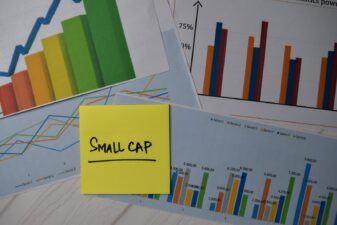There’s no better way to try and generate a second income than by buying UK blue-chip shares, in my opinion.
The London stock market’s famous for its strong dividend-paying culture. The FTSE 100 and FTSE 250 are packed with companies whose proven business models and robust balance sheets make them reliable dividend payers over time.
Share indices in the US and Europe are also packed with industry heavyweights, of course. But what helps set Britain apart is its high concentration of utilities, consumer goods, financial services and energy companies. These sectors are especially great at paying large and dependable dividends.
Should you invest £1,000 in M&G right now?
When investing expert Mark Rogers has a stock tip, it can pay to listen. After all, the flagship Motley Fool Share Advisor newsletter he has run for nearly a decade has provided thousands of paying members with top stock recommendations from the UK and US markets. And right now, Mark thinks there are 6 standout stocks that investors should consider buying. Want to see if M&G made the list?
I’m confident that if I had a £20,000 lump sum to invest I could eventually make a huge passive income with British stocks. Here’s how I’d try to do it.
Tax benefits
The first thing I’d do is set up a tax-efficient product to build my portfolio. We’re talking about an Individual Savings Account (ISA) or a Self-Invested Personal Pension (SIPP).
Please note that tax treatment depends on the individual circumstances of each client and may be subject to change in future. The content in this article is provided for information purposes only. It is not intended to be, neither does it constitute, any form of tax advice. Readers are responsible for carrying out their own due diligence and for obtaining professional advice before making any investment decisions.
Tax is the biggest expense investors have to endure. So protecting our capital gains and dividends from the taxman is one of the most important things we must do.
A Financial Times article earlier this year illustrated the enormous benefit that tax-efficient products like ISAs can have on our wealth.
Quoting figures from wealth manager Netwealth, it said that “an additional rate taxpayer investing £100,000 in a Stocks and Shares ISA would save £44,000 in taxes over 10 years“. The calculation assumed an average annual return of 5.9% and excluded trading fees.
9.3% returns
Having opened my SIPP or ISA, my next step would be to load up with shares from the FTSE 100 and FTSE 250.
The average long-term yearly return for them combined stands at 9.3%. This reflects a blend of share price gains and dividend income and, over time, it can transform a middling portfolio into a magnificent one.
Let me show you how. Say I invest £20,000 into UK shares and enjoy that 5.9% average yearly return mentioned in that FT article. After 35 years, that would have grown to £156,910.
Now let’s say I manage to earn a 9.3% annual return over the same timeframe. After three-and-a-half decades I’d have a far better £511,928 sitting in my account.
I could then draw down 4% of this sum each year to enjoy a monthly passive income of £1,706.
A top FTSE share
There are literally hundreds of companies to choose from across the FTSE 100 and FTSE 250. So which would I buy?
Right now, M&G‘s (LSE:MNG) one stock I’m planning to buy before too long. At 9.7%, its dividend yield for 2024 sails above the Footsie average of 3.6%.
City analysts expect the firm to steadily grow dividends over the next three years at least too. And so its yield jumps to well over 10%.
Critically, the company’s cash-rich balance sheet also means these forecasts look quite robust (its Solvency II capital ratio was above 200% at the end of 2023).
A competitive financial services market is a significant threat to the company, sure. But as demand for retirement products steadily grows, I believe M&G will deliver solid earnings and dividend growth over the long term.








